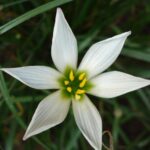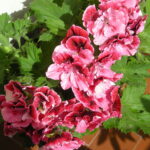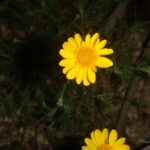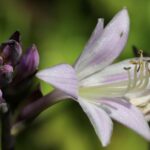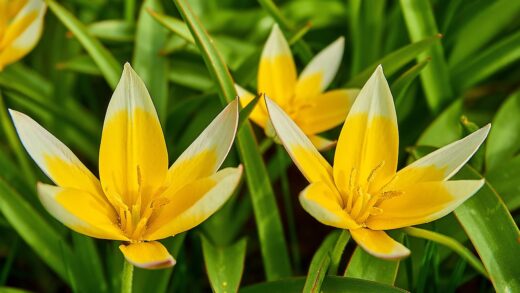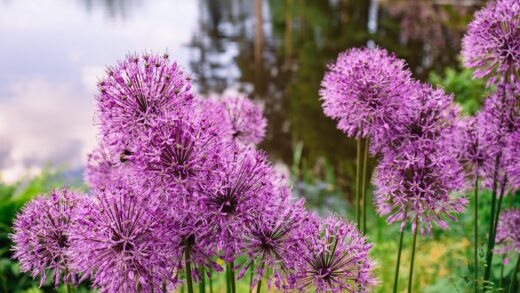The planting and propagation of the bachelor palm

Successfully planting and propagating the Zamioculcas zamiifolia is a rewarding and straightforward process that allows you to expand your collection or share this resilient plant with others. The key to successful planting begins with selecting the right foundation: a suitable container and a well-draining soil mix. Given the plant’s succulent nature and its large underground rhizomes that store water, it is critically vulnerable to root rot. Therefore, a pot with ample drainage holes is not just a suggestion but an absolute necessity. Coupled with a gritty, porous soil blend—typically a mix of potting soil, perlite, and sand—this setup ensures that excess water can escape freely, preventing the waterlogged conditions that are fatal to the plant. When planting a new ZZ, whether it is a nursery purchase or a newly propagated specimen, ensuring the top of the rhizome is just slightly below the soil surface will set it on a path to healthy, stable growth.
The process of repotting an existing plant follows the same fundamental principles. ZZ plants grow slowly and prefer to be slightly root-bound, so they do not require frequent repotting, typically only needing a new home every two to three years. When the time comes, it is important to handle the plant with care, as the fleshy stems and rhizomes can be brittle. Gently remove the plant from its current pot, inspect the root system for any signs of rot, and place it in a new container that is only marginally larger than the previous one. Using a pot that is too spacious will hold excess soil and moisture, recreating the very conditions that are detrimental to the plant’s health.
Propagation of the ZZ plant is a testament to its hardy nature, as it can be accomplished through several different methods, each with a high rate of success. The most common technique is stem cutting, where a healthy stem is cut near the soil line and then divided into smaller sections. Another popular and highly effective method is leaf cutting, where individual leaflets are removed from the stem and placed in soil or water to root. While these methods are reliable, they require a great deal of patience, as it can take several months for a new rhizome and subsequent shoots to develop.
The third method of propagation is division, which is the quickest way to produce a new, mature-looking plant. This is typically done during repotting, where the entire plant is removed from its pot and the rhizome clump is carefully separated into two or more sections. Each section, complete with its own stems and roots, can then be planted in its own container. This method provides instant results and is ideal for when a plant has become too large for its space or you wish to create a substantial new plant immediately. Regardless of the method chosen, the principles of providing warmth, indirect light, and well-draining soil remain constant for successful propagation.
Selecting the right container and soil
Choosing the appropriate container is the first critical step in ensuring the long-term health of a Zamioculcas zamiifolia. The single most important feature of any pot for this plant is the presence of drainage holes. Without a way for excess water to escape, the soil will become saturated, depriving the roots of oxygen and inevitably leading to root and rhizome rot. While decorative pots without drainage can be used as cachepots, the plant should always be housed in a primary pot with holes that sits inside the decorative one. This allows you to remove the plant for watering and let it drain completely before placing it back.
More articles on this topic
The material of the pot can also play a role in moisture management. Unglazed terracotta or clay pots are an excellent choice because the material is porous, which allows water to evaporate through the walls of the pot. This helps the soil dry out more quickly and uniformly, providing an extra layer of protection against overwatering. However, plastic or glazed ceramic pots are also perfectly suitable, provided they have adequate drainage holes. The choice between them often comes down to aesthetic preference and watering habits, with terracotta being more forgiving for those who tend to water too generously.
The soil composition is equally as important as the container. Zamioculcas zamiifolia requires a potting medium that is light, airy, and drains very quickly. Using a standard houseplant potting mix by itself is not recommended as it is designed to retain moisture, which is the opposite of what a ZZ plant needs. A high-quality cactus or succulent mix can be a good starting point, as these are formulated for excellent drainage. These mixes typically contain a higher proportion of inorganic materials like sand or pumice.
For those who prefer to create their own mix, a simple and effective recipe is to combine equal parts of a standard potting soil, perlite, and coarse sand. The potting soil provides nutrients, the perlite creates air pockets and lightens the mixture, and the sand ensures that water flows through rapidly. Some growers also like to add a handful of orchid bark or horticultural charcoal to further enhance aeration. This custom blend closely mimics the gritty, rocky soils of the plant’s native habitat in Eastern Africa, providing the perfect environment for its rhizomes to thrive.
The process of potting and repotting
When you are ready to plant or repot your Zamioculcas zamiifolia, the process should be approached with a gentle hand. Begin by preparing your new pot and soil mixture. It is a good practice to place a small piece of mesh or a coffee filter over the drainage hole to prevent soil from washing out while still allowing water to escape. Fill the pot about one-third of the way with your well-draining soil mix, creating a base for the plant to sit on.
More articles on this topic
To remove the plant from its current container, gently tip the pot on its side and tap the bottom to loosen the root ball. Avoid pulling on the stems, as they can break away from the rhizomes. Instead, grip the base of the plant and ease it out. Once removed, take a moment to inspect the rhizomes and roots. They should be firm and light-colored. If you find any parts that are soft, mushy, or dark brown, carefully trim them away with a sterilized knife or pruning shears to prevent the spread of rot.
Place the plant into the new pot, ensuring that the top of the root ball sits about two to three centimeters below the rim of the pot. This space allows for watering without causing soil to overflow. The top of the rhizomes should be positioned just at or slightly below the final soil level. Begin backfilling around the root ball with your soil mix, gently tamping it down to remove any large air pockets. Avoid compacting the soil too much, as this would defeat the purpose of creating an airy, well-draining medium.
After repotting, it is often recommended to wait a few days before watering. This allows any roots or rhizomes that may have been damaged during the process to heal and callus over, reducing the risk of rot. Place the newly potted plant in a location with bright, indirect light and allow it to acclimate to its new home. Since ZZ plants are slow growers, they will not need to be repotted again for another two to three years, or until they show clear signs of being severely root-bound.
Propagation through stem cuttings
Propagating Zamioculcas zamiifolia from stem cuttings is a very reliable, albeit slow, method to create new plants. The process begins with selecting a healthy, mature stem from the mother plant. Using a clean, sharp knife or pruning shears, make a cut at the base of the stem, as close to the soil line as possible. This long stem provides ample material to work with, and you can choose to root the entire stem or cut it into several smaller sections, each with a few pairs of leaves, to create multiple new plants from a single cutting.
Once you have your stem cutting, you have two primary options for rooting: water or soil. To root in water, simply place the bottom end of the cutting into a jar or vase of clean water, ensuring at least one node (the point where leaves emerge) is submerged. Change the water weekly to keep it fresh and prevent bacterial growth. Over the course of several weeks to months, you will begin to see small roots and eventually a tiny rhizome forming at the base of the cutting. Once the roots are a few centimeters long, the cutting can be transferred to a pot with well-draining soil.
For soil propagation, allow the cut end of the stem to dry and callus over for a few hours. This helps to prevent rot when it is placed in the soil. Then, insert the bottom of the cutting into a small pot filled with a well-draining propagation mix, such as a blend of perlite, vermiculite, and a small amount of potting soil. Water the medium lightly and place the pot in a warm location with bright, indirect light. Keep the soil slightly moist but never soggy, and be prepared to wait, as it can take several months for the cutting to establish a rhizome and begin producing new growth.
Patience is the most crucial element when propagating ZZ plants from stem cuttings. The process of forming a new rhizome is energy-intensive for the cutting and happens slowly beneath the soil surface. You may not see any visible signs of new growth above the soil for a very long time, sometimes up to a year. It is important not to disturb the cutting during this period. As long as the original stem cutting remains firm and green, you can be confident that the propagation process is working, and eventually, a new shoot will emerge.
Leaf cuttings and division methods
An even more patient method of propagation is using leaf cuttings, which showcases the remarkable regenerative abilities of the Zamioculcas zamiifolia. To do this, you simply snip off a single leaflet from a healthy stem, making the cut as close to the main stalk as possible to include a small piece of the petiole. As with stem cuttings, you can allow the cut end to callus over for a few hours to minimize the risk of rot. This simple method allows you to propagate a large number of plants without sacrificing an entire stem from the parent plant.
Once the leaf cutting has callused, you can place it directly into a well-draining soil mix. Insert the cut end of the leaflet about one centimeter deep into the soil, with the glossy side of the leaf facing up. You can fit many leaf cuttings into a single shallow tray or pot. Place the container in a warm spot with bright, indirect light and water sparingly, just enough to keep the soil from completely drying out. Over an extended period, often six months or longer, a small rhizome will form at the base of the leaf, followed eventually by roots and a new shoot.
The process for leaf cuttings is notoriously slow, and it is a true test of a gardener’s patience. The original leaf may even wither and die before you see any new growth, but do not be discouraged. This is often a sign that the leaf has expended all its energy into forming the new rhizome underground. As long as the soil is not kept too wet, the tiny rhizome will continue to develop and will eventually send up a new stem. This method is a fascinating way to observe the plant’s life cycle from the very beginning.
For those seeking more immediate results, division is the most efficient propagation technique. This method is best performed when you are repotting a large, mature plant that has multiple stems and a well-developed rhizome system. After removing the plant from its pot, gently shake off the excess soil to expose the clump of rhizomes. Identify natural separation points between sections of rhizomes, and carefully pull them apart by hand. If they are tightly connected, you can use a clean, sharp knife to cut them apart, ensuring that each new division has at least one or two stems and a healthy portion of rhizomes and roots. Each of these divisions can then be potted up individually as a new, independent plant.








